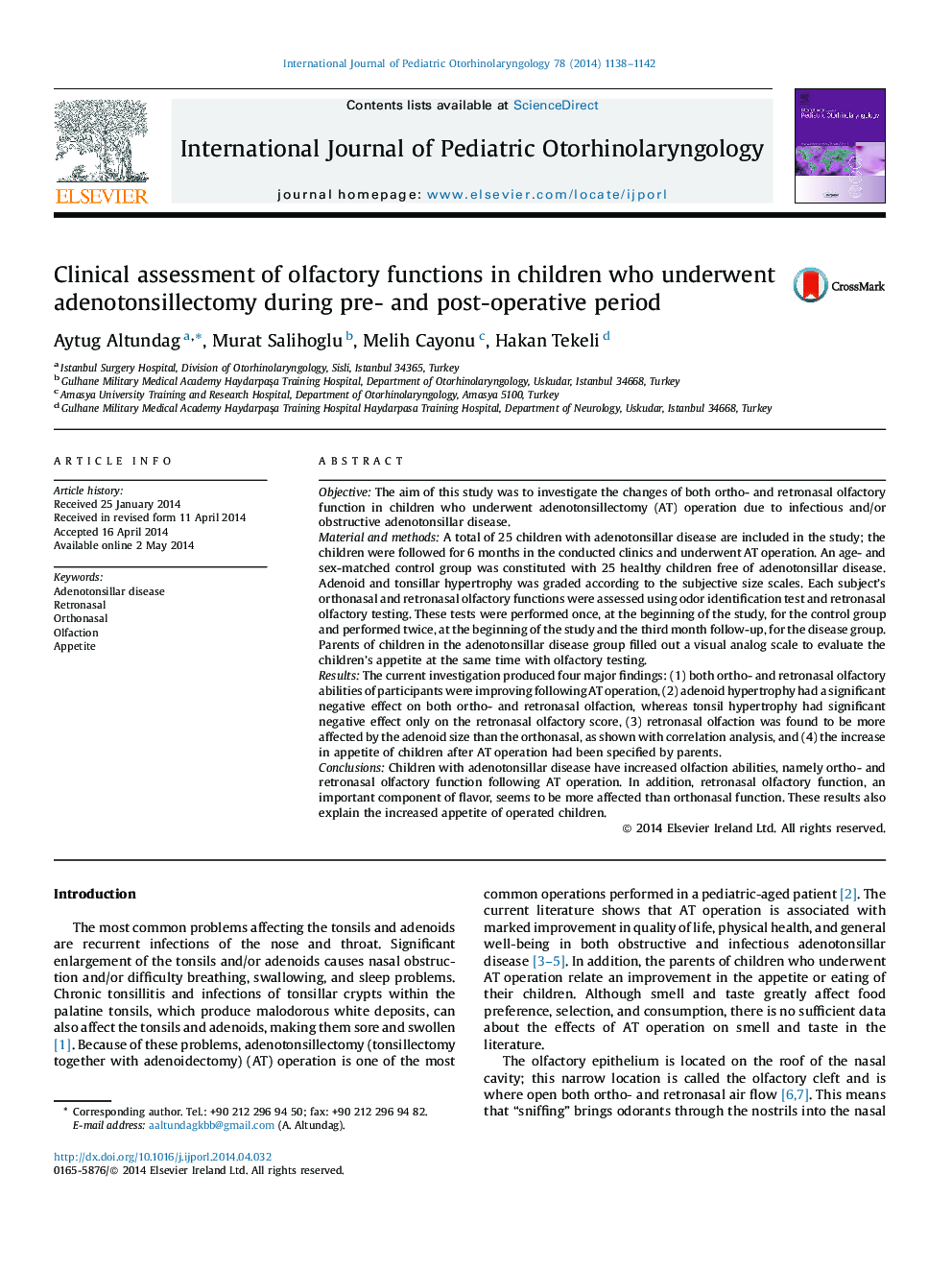| Article ID | Journal | Published Year | Pages | File Type |
|---|---|---|---|---|
| 4112579 | International Journal of Pediatric Otorhinolaryngology | 2014 | 5 Pages |
ObjectiveThe aim of this study was to investigate the changes of both ortho- and retronasal olfactory function in children who underwent adenotonsillectomy (AT) operation due to infectious and/or obstructive adenotonsillar disease.Material and methodsA total of 25 children with adenotonsillar disease are included in the study; the children were followed for 6 months in the conducted clinics and underwent AT operation. An age- and sex-matched control group was constituted with 25 healthy children free of adenotonsillar disease. Adenoid and tonsillar hypertrophy was graded according to the subjective size scales. Each subject’s orthonasal and retronasal olfactory functions were assessed using odor identification test and retronasal olfactory testing. These tests were performed once, at the beginning of the study, for the control group and performed twice, at the beginning of the study and the third month follow-up, for the disease group. Parents of children in the adenotonsillar disease group filled out a visual analog scale to evaluate the children’s appetite at the same time with olfactory testing.ResultsThe current investigation produced four major findings: (1) both ortho- and retronasal olfactory abilities of participants were improving following AT operation, (2) adenoid hypertrophy had a significant negative effect on both ortho- and retronasal olfaction, whereas tonsil hypertrophy had significant negative effect only on the retronasal olfactory score, (3) retronasal olfaction was found to be more affected by the adenoid size than the orthonasal, as shown with correlation analysis, and (4) the increase in appetite of children after AT operation had been specified by parents.ConclusionsChildren with adenotonsillar disease have increased olfaction abilities, namely ortho- and retronasal olfactory function following AT operation. In addition, retronasal olfactory function, an important component of flavor, seems to be more affected than orthonasal function. These results also explain the increased appetite of operated children.
